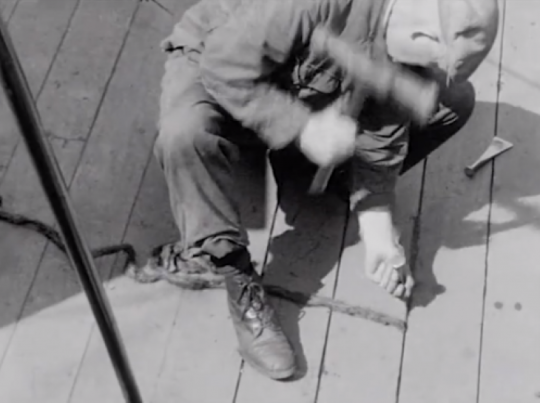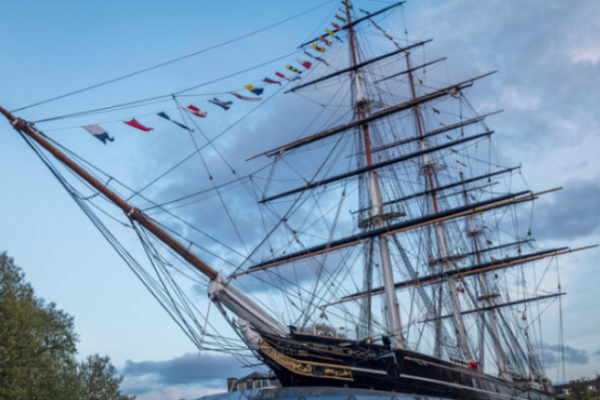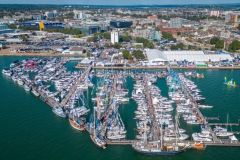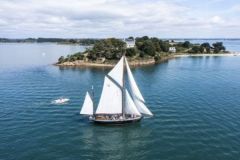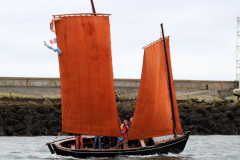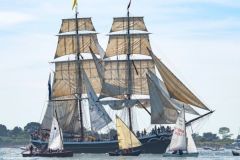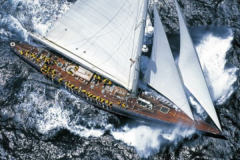A flagship of marine technology
Designed in 1869 by the Scott and Linton shipyard in Dumbarton, Scotland, to plans by architect Hercules Linton, the Cutty Sark was commissioned by London shipowner John Willis of the Jock Willis Shipping Line. With dimensions of 85 meters and a tonnage of 963 tons, she was fitted with 32 sails covering a total surface area of 3,000 m².
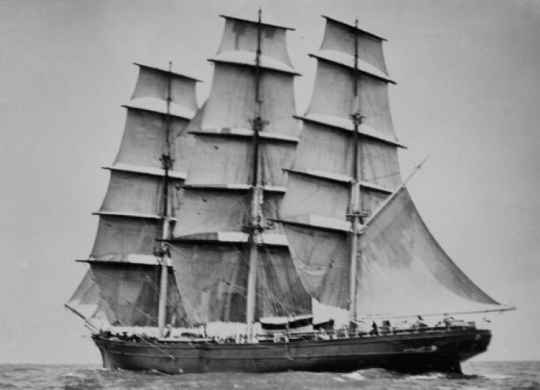
The name "Cutty Sark" has its origins in the ship's figurehead, inspired by the witch Nannie Dee described in Robert Burns' poem "Tam o' Shanter". This figurehead depicts a woman wearing a shirt that is too short, earning her the nickname "cutty-sark" in Scottish, literally meaning "little cut shirt". In 2021, a new bow sculpture, embodying Nannie, was erected on the Cutty Sark. Crafted by artisan Andy Peters, this representation draws its inspiration from Linton's original design.
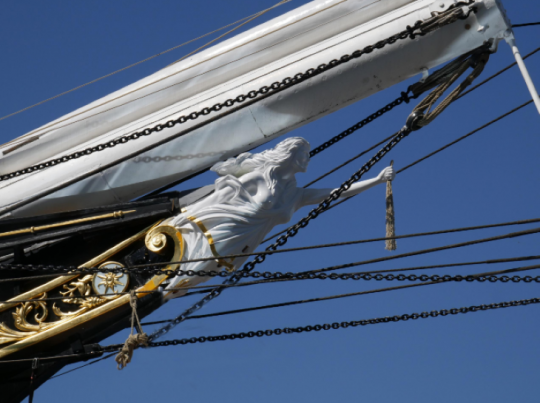
The Cutty Sark was launched on November 23, 1869, under the command of Captain George Moodi. Her carrying capacity was 600 tons of tea, or around 10,000 cases.
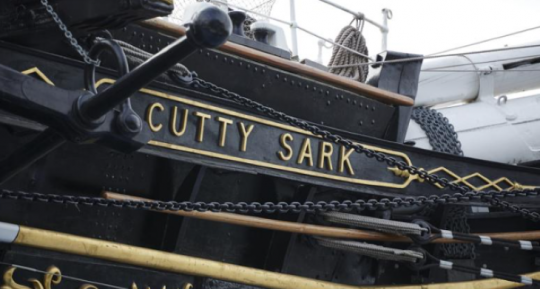
The Cutty Sark belongs to the penultimate generation of merchant sailing ships, preceding the heyday of the great steel cap-horners. Her hull is coated with a copper alloy, composed of 70% copper and 30% zinc. Its innovative design, combining wooden planking with an iron structure, resulted in an extremely robust and rigid vessel, offering more space for cargo. The hull was originally clad in Muntz metal, a composite developed in Birmingham.
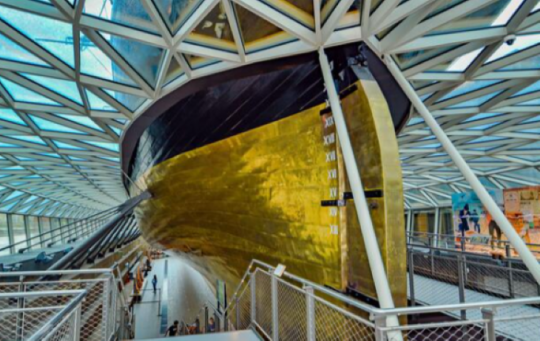
She was one of the last clippers to see the light of day, surviving the rise of steamships. At a time when these imposing vessels were dedicated to transporting goods around the world, Cutty Sark stands out as the last model still preserved, making her a vital historical witness to the history of the United Kingdom.
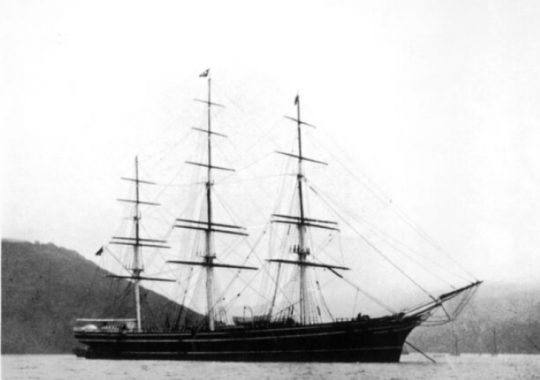
The tea race
Clippers like the Cutty Sark were distinguished by their exceptional speed and maneuverability, frequently averaging over 9 knots. Built at a time when tea clippers represented the apogee of maritime technology, the Cutty Sark distinguished herself in fierce competitions, such as the famous "Tea race" of 1866.
Engaged in this frantic tea race, the Cutty Sark took part in a memorable duel in 1872, competing with her rival the Thermopylae. Although arriving a week after her rival, the Cutty Sark made maritime history for her exceptional speed.
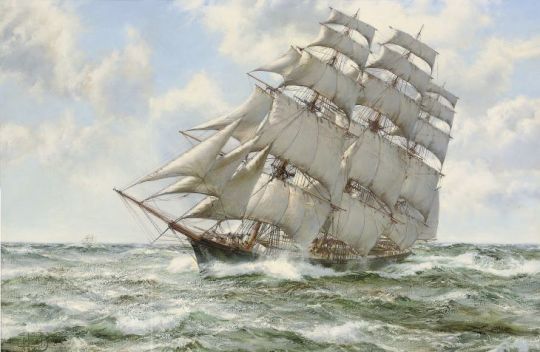
Decline and renewal
The completion of the Suez Canal coincided with the launch of the Cutty Sark, marking a crucial period in the history of maritime navigation. This coincidence introduced a shorter route to China. Clippers, faced with difficult weather conditions and onerous tolls, lost their dominant position in maritime trade. By 1877, only nine of them dared to make the voyage to China, compared with sixty in 1870. After eight voyages, the Cutty Sark was forced to abandon the tea trade in the face of the advent of steamships. Nevertheless, she found a new vocation as a wool carrier from Australia and New Zealand, setting a record for a 67-day crossing to London.
The return journey from Australia required the Cutty Sark to round the dreaded Cape Horn, where icebergs, stormy seas and the roaring 40s presented formidable challenges. Captain Woodget photographed these icebergs and ensured the ship's place among the fastest afloat. The Cutty Sark is credited with a record 360 nautical miles covered in 24 hours, at an average speed of 15 knots, in its class.
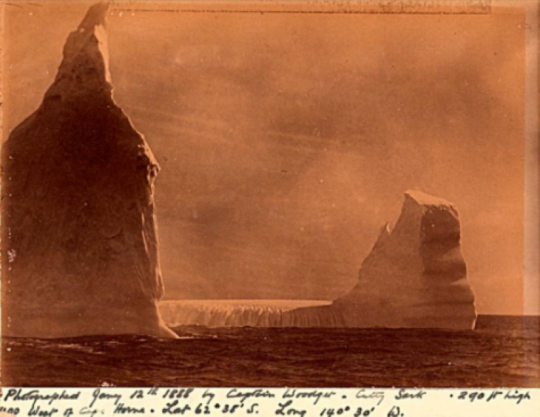
In 1895, John Willis sold the Cutty Sark to a Portuguese company, who renamed her Ferreira. For the next 27 years, the ship served as a general cargo carrier, making Atlantic crossings between Portugal, the west coast of Africa and the American continent.
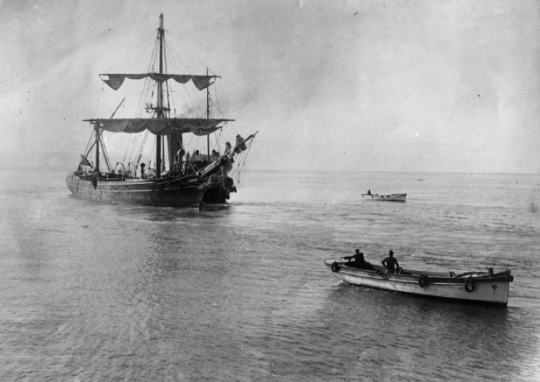
After her use by the Portuguese, the Cutty Sark was purchased in 1922 by Captain Wilfred Dowman, who undertook an ambitious restoration to bring the ship back to her original appearance. Becoming the first historic ship open to the public since the Golden Hind in the 16th century, the Cutty Sark welcomed many visitors.
Transformed into a cadet training ship, the Cutty Sark trained a number of young aspirants from a variety of backgrounds for careers in the Royal Navy or the Merchant Navy. On Captain Dowman's death in 1936, his widow donated the Cutty Sark to the Incorporated Thames Nautical Training College in Greenhithe. On her departure from Falmouth in 1938, the ship drew rapturous applause. It was her last time at sea.
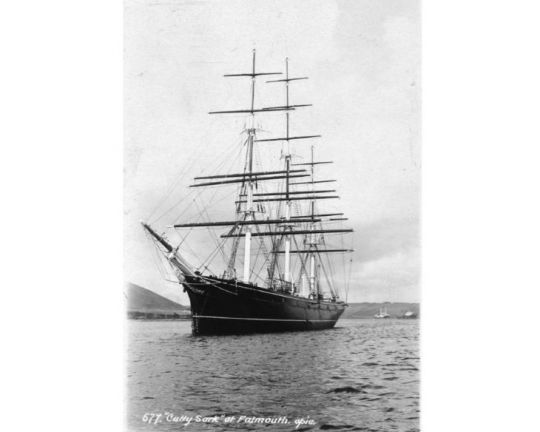
In 1938, Cutty Sark became an auxiliary ship to the cadet training ship HMS Worcester in Greenhithe, Kent. She was then used to train officers for the Royal and Merchant Navies, a crucial mission with the outbreak of the Second World War in 1939. In 1951, the ship was moved to London for the Festival of Britain celebrations, but her condition attracted the attention of advocates determined to save her from demolition.
Under the aegis of the Cutty Sark Society, founded by Frank Carr, Director of the National Maritime Museum, Prince Philip took possession of the Cutty Sark on behalf of the Society at a special ceremony prior to the coronation of Queen Elizabeth II in 1953. In December 1954, the ship was towed into a purpose-built dry dock at Greenwich. Three years of painstaking restoration followed, returning the Cutty Sark to her tea clipper appearance. She was officially inaugurated by Her Majesty the Queen in 1957.
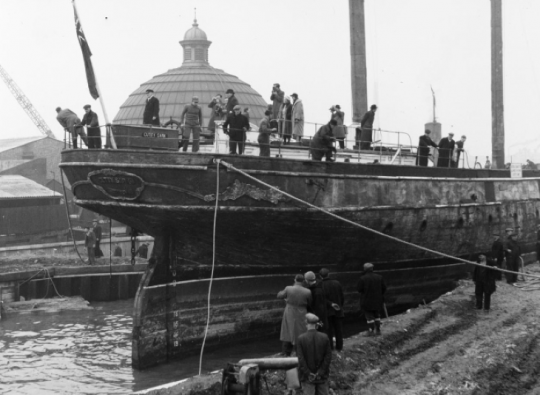
A museum ship
Since 1954, the Cutty Sark has been transformed into a maritime museum affiliated to London's National Maritime Museum. Class I listed and recognized as a National Historic Ship within the National Historic Fleet, she was also designated a UNESCO World Heritage Site in 1997. She now sits in dry dock alongside the River Thames in London's Greenwich district.
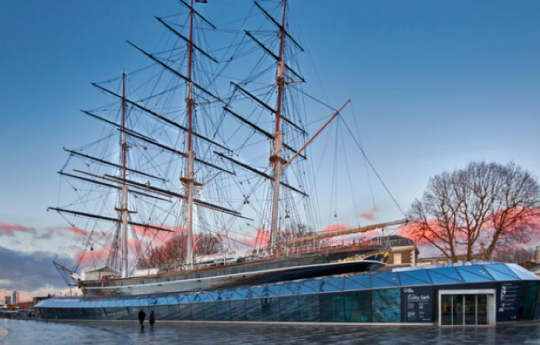
In 2007, a fire damaged the ship while it was being restored. Fortunately, about half of the ship's original elements (the masts, most of the upper floor and the rudder), as well as the furniture and fittings, were preserved as part of the renovation work, escaping the disaster. The damage affected the entire central structure of the ship, but spared the hull and exterior decorative elements. The ship's characteristic stern was also preserved. However, the interior structural elements and most of the inner deck floor, as well as the steel structure supporting the entire hull, were too severely damaged to be preserved, requiring a complete rebuild.

Despite these setbacks, an ambitious conservation project, "Saving Cutty Sark," was launched to restore the yacht.
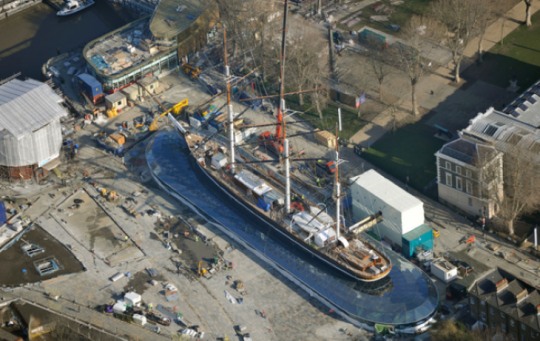
After years of renovation, the Cutty Sark continues to captivate visitors, symbolizing the grandeur of Britain's maritime past.
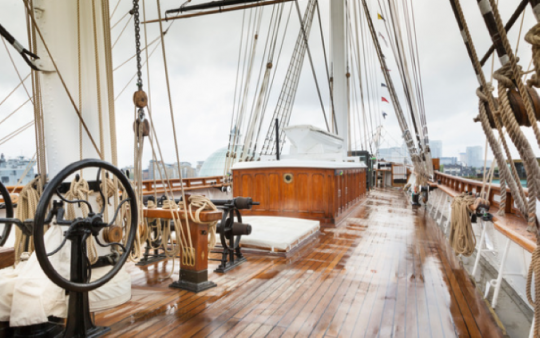
On April 25, 2012, Queen Elizabeth II reopened the clipper after an extensive restoration.
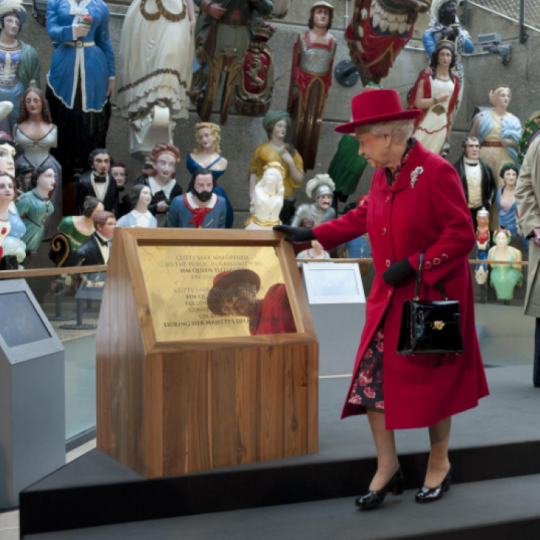
To preserve the shape of the hull, the ship was raised three meters off the ground, offering a unique opportunity to walk beneath its slender lines.
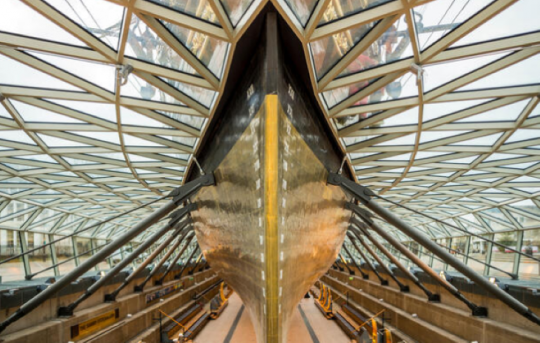
What does the Cutty Sark "crew" do?
At sea, the Cutty Sark's crew had to constantly maintain and repair the vessel to ensure its safety and buoyancy. Although she no longer sails, ongoing care is necessary to preserve this 155-year-old vessel for all to enjoy. Every day, a team chips, paints, polishes and repairs every part of the ship.
The Cutty Sark is made from a variety of materials such as teak, rock elm, iron and brass, all of which require specific maintenance methods. Much of the vessel's maintenance follows an annual cycle due to the differentiated effects of the elements on its components, such as the shrinkage or expansion of wood in response to external temperature variations, which can lead to cracks or even leaks.
Some jobs, such as polishing the brassware, require frequent repetition, while others, dictated by urgent needs, are less regular. For example, the poop deck, the raised area at the stern of the ship, requires new planks to keep the area below dry.
Working with specialists from TS Rigging, the team of shipowners will spend the next few months replacing the existing deck using traditional techniques. They will be using iroko, a wood with properties similar to those of the original teak, which, although durable and of high quality, is now difficult to obtain in an ethical and sustainable way. The use of oakum and pitch for caulking is traditional.
